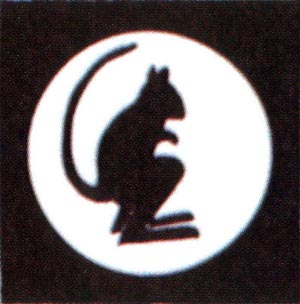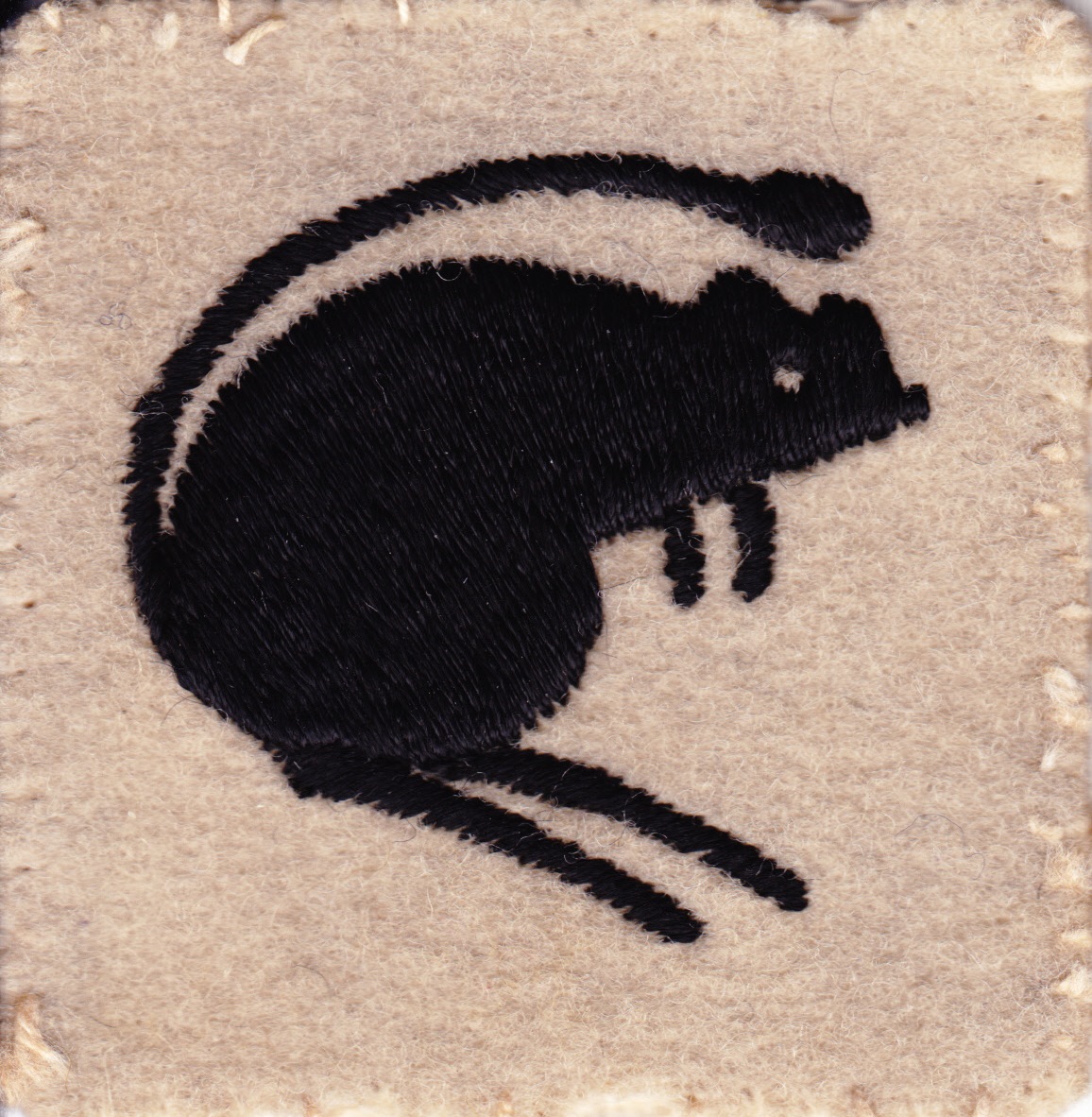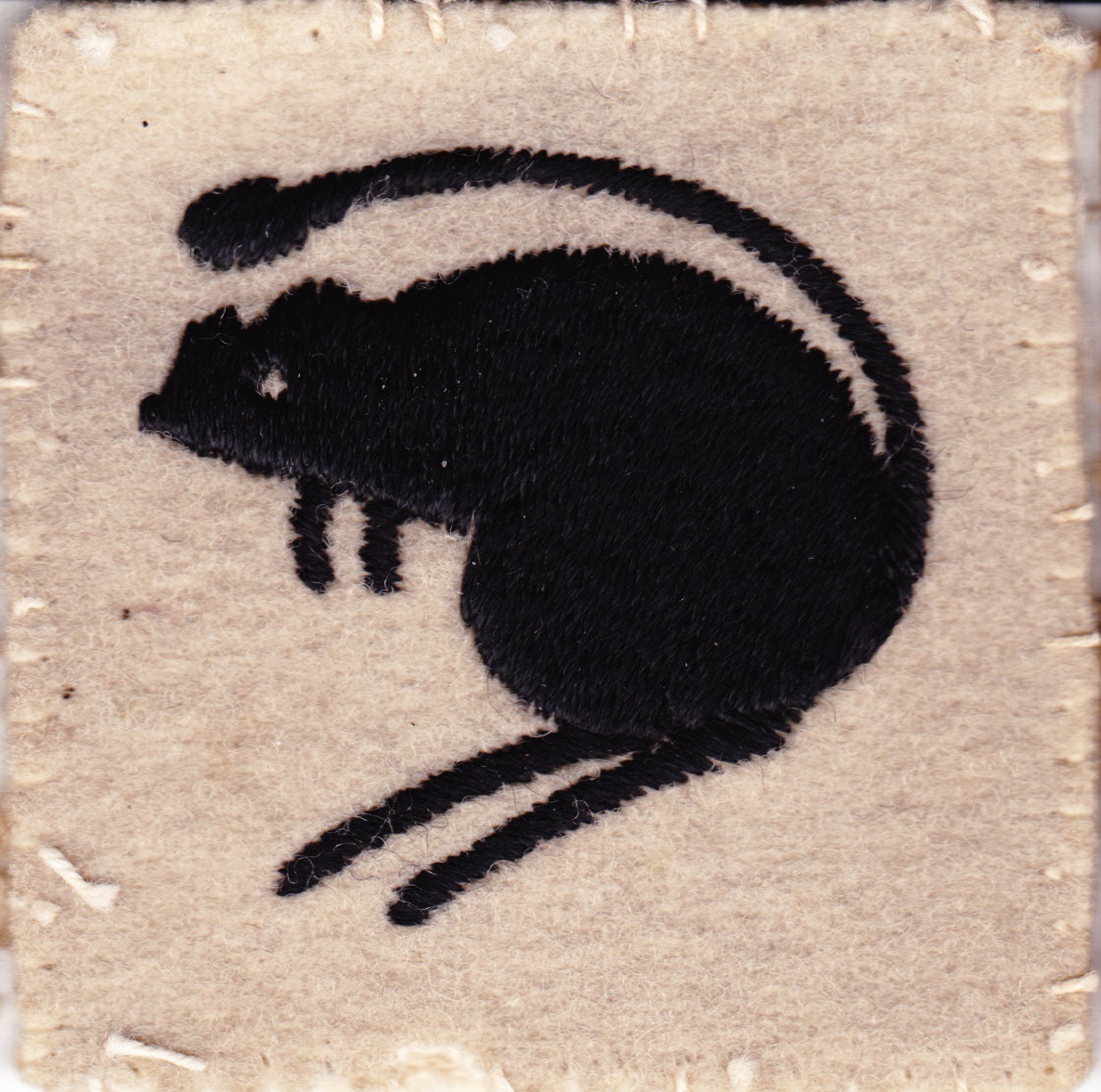


Brief History Of The British 4th Armoured Brigade
"The Black Rats"
The British 4th Armoured Brigade was originally formed as Heavy Armoured Brigade consisting of 1st and 6th Royal Tank Regiments as part of what was then known as the Mobile Division (before it became the 7th Armoured Division) in 1938.
The Brigade was formed in the desert of North Africa just before the Second World War and fought in most of the major campaigns of the war, and theatres of operations against Italian, German and Japanese forces. Much detail can be found throughout this website and within the reference material highlighted on the
Other Sites and Books page. What follows here is a brief outline of the Brigades history, but much can be found elsewhere by careful reading. Please read the History of the 7th Armoured Division, too.In December 1939, Major General Michael Creagh took command, of the Mobile Force, with it continuing its exercises and receiving better equipment, through out the Winter. During this time the three brigade changed their names. The Heavy Armoured became the 4th Armoured Brigade, (Click here to see the Order of Battle as this time) and at this time it used the Division Sign was as shown to the right.

On 16th February 1940, the Mobile Division became the 7th Armoured Division and at about the same time the famous Jerboa Divisional Sign appeared, which all its units adopted.
In April 1940, it became clear that the Italians were moving troops upto the frontier wire near Sollum and so at the end of that month the Division and its Brigades began to deploy.
What followed is chronicled as part of series of engagement pages, but during June 1940 the 7th Armoured Division and with it 4th Armoured Brigade took part in a series of
border raids along the frontier and the counter attack at Sidi Barrani, in November that year, where large numbers of Italian prisoners were taken. Then in January 1941, it took part in the successful capture of Tobruk and Bardia and culminating with the action at Beda Fomm, in February 1941, when the retreating Italians were held by a small force while the rest of the 7th Armoured Division caught up causing the surrender of over 25,000 Italians. This campaign effectively destroyed the Italian Army in North Africa. Click here to see the Order Of Battle at this timeWhen the Deutsche Afrika Korps and Italians attacked in April 1941 the Division was refitting in the Nile Delta, but was soon back in the Western Desert. In May 1941, the Brigade took part in
Operation Brevity and later in Operation Battleaxe, in an attempt to lift the siege of Tobruk, but suffered heavy loses in tanks and men. Click here to see the Order Of Battle at this time. In November 1941, the Brigade as part of 7th Armoured Division took part in Operation Crusader and particularly the bloody battles around Sidi Rezegh, Rommel's Raid, The Axis Withdrawal and Clearing Cyrenaica, where it was the nearly wiped out and only Armoured Brigade to fight almost to the end of the campaign. Click here to see the Order Of Battle at this time.n January/February 1942, the Axis forces attacked again, but the 7th Armoured Division was refitting after the Crusader battles and did not return to the Western Desert until April that year. In May and June 1942, it was involved in the battles for the
Gazala Line and the 'Cauldron', before having to withdraw to the El Alamein line with the rest of the British Army, where it was involved in the battle of First Alamein. Click here to see the Divisional Order Of Battle at this time. After the British forces withdrew behind the El Alamein line the Brigade (now called 4th Light Armoured, because of the lack of tanks) and the Division went through major refitting and training and played a part in the defeat of the German Panzer forces during the Battle of Alam Halfa, in late August and early September 1942. Click here to see the Brigade Order Of Battle at this timeHaving completed its retraining and been refitted the Brigade, which was now an Independent Armoured Brigade, still under the command of 7th Armoured Division was ready for the British offensive of
El Alamein in October 1942. Click here to see the Brigade Order Of Battle at this time. After breaking through the Axis lines, the 4th Light Armoured Brigade and other British formations pursued the retreating Germans and Italians, along the North African coast, back over the old battle grounds of 1940 and 1941, taking Tripoli on the way. Click here to see the Brigade Order Of Battle at this time.
By early 1943, the Brigade was ready to take part in the final push to expel the Axis forces from North Africa, including the Battle of Mareth in March 1943, acting as an independent unit during this period. Click here to see the Brigade Order Of Battle at this time. In April the final attacks started and by now the Brigade was wearing the 'Black Rat' (Jerboa) emblem (shown right) instead of 7th Armoured Division's red 'Desert Rat' one. on 7th May, the 11th Hussars entered Tunis to capture the city. By 13th May the war in North Africa was over and the 4th Armoured Brigade help negotiate the surrender of the Italian Army by General Messe to General Freyberg, commanding 2nd New Zealand Division. Then along with the rest of 7th Armoured Division enjoyed a well earned rest.
In June 1943 it joined 13 Corps as an Independent Armoured Brigade, supporting 5th and 50th Divisions in Sicily, during Operation Husky - The Invasion of Sicily (including 3rd County of London Yeomanry's advance, 44th Royal Tank Regiment's advance, Operation Blackcock) Click here to see the Brigade Order Of Battle at this time. Later that year and on 16th September 1943 it moved to Italy where it fought with the 8th Army (Click here to see the Brigade Order Of Battle at this time) on the East coast, taking part in the battles to cross Sangro River and later the Moro River. Click here to see the Brigade Order Of Battle at this time. It left Italy in January 1944 to return home to prepare for the invasion on Northern Europe.
The first tanks for the Brigade landed in Normandy on 7th June 1944 and almost immediately took part in the action to take the Douvres Radar Station and having supported many actions by British Infantry Divisions and the 11th Armoured Division, to cross the River Odon (during Operation Epsom), it fought its way out of of the killing fields that were Normandy, via the Odon Bridgehead and Hill 112, Operation Bluecoat - Vire, and helped in closing the Falaise Pocket then pushed on through Northern France into Belgium and Holland helping to clear German forces from the the Low Countries. Click here to see the Brigade Order Of Battle at this time. As part of this part of the Brigade linked up with US Paratroops during Operation Market-Garden in September 1944 and then helped clear the flanks of the allied advance from the Wilhelmina Canal and the Lower Rhine. It remained in Holland for November and December 1944, into January 1945, continuing to keep the pressure on the German forces on the Maas. In March 1945, the Brigade moved from the Maas into Germany itself and then took part in the crossing of the Rhine, before advancing across Germany to Bremen, finally meeting up the Russians at Wismar, before moving to Hamburg just as the victory over Nazi Germany was won. The end of the Second World War found 4th Armoured Brigade was in Northern German as part of the occupying forces, between Geesthacht and Hamburg. In March 1948 the Brigade was disbanded, but was reformed in 1981 in Munster, West Germany.
In its entire history it the 4th Armoured Brigade had only been in the United Kingdom for about six months. Some of the regiments that served have been disbanded or merged over the years, but the Black Rat (Jerboa) emblem is still worn proudly by the men of the 4th Mechanized Brigade which the 4th Armoured Brigade became in 2007. It is good to know that one of the first Brigades that served with the Division, but left it, now continues its heritage, still wearing the 'Black Rat' badge. Likewise the other original Armoured Brigade (the 7th) is also still serving in the British Army, who still wear their "Desert Rat" badge.
In 2014 an end of an era was announced by the MoD that as part of the reorganisation of the British Army that the 4th Mechanised Brigade, would cease to exist and become the 4th Infantry Brigade and HQ North East. The new Brigade will continue to wear the Black Rat.
Over the years the men that served with 4th Armoured Brigade have become fewer in number, but on 23rd October 1998, a permanent memorial to the 7th Armoured Division (shown below) was dedicated at Mundford, in Thetford Forest, Norfolk, by Field Marshall Lord Carver, who served with 1st Royal Tank Regiment and later Commanded 4th Armoured Brigade from June 1944 to the end of World War Two.
On 10th November 2002, the memorial was Dedicated by the Bishop of Lynn, the Rt. Rev. Anthony Foottit (assisted by Rev. David Hanwell), during the Remembrance Day service that year, to the memory of the Division and those who served in it, giving the 'Desert Rats' a permanent War Memorial here in the UK.
During the Open Day on the 27th June 2004 the present day successors to the 7th Armoured Division, namely 4th and 7th Armoured Brigades, installed an additional plaque on the Memorial plinth, commemorating the Desert Rats from 1945 to date. The Dedication of the plaque was conducted by Rev. David Hanwell in the presence of Brigadier Adrian Bradshaw Commanding 7th Armoured Brigade and other senior officers from both the 4th and 7th Armoured Brigades.
In 2014 to commemorate the Normandy Landings and Campaign an additional plaque was added to the reverse side of the memorial, as below.
Please click here to find out more about the location of 7th Armoured Division (The Desert Rats) Memorial.
Floreat Gerboa
Please click here to bookmark this page for future reference